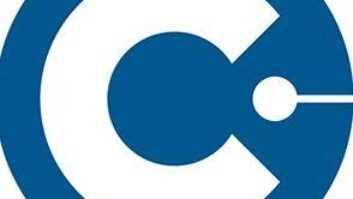IBOC Update – Feb 11, 2004
Feb 11, 2004 12:00 PM, compiled by Mark Krieger, CBT
Index:
- Analog SCA Operation Still Viable for HD Radio FMBroadcasters
- Clear Channel’s Littlejohn Named to IbiquityBoard of Directors
- Broadcasters, Ibiquity Optimistic on FCCAuthorization of FM Dual-antenna Operation
- Tale of an IBOC Early Adopter
- An Introduction to the New Language Surrounding HDRadio
- Omnia Audio Adds Two IBOC Products toLine
- Broadcast Electronics to Hold HD Radio Seminar atNAB2004
To receive these articles twice a month in your e-mail, subscribe tothe IBOC Update – Insight on HD Radio e-newsletter. Click here to subscribe.
Technology/Applications
Analog SCA Operation Still Viable for HDRadio FM Broadcasters
FM broadcasters converting to IBOC operations may want to thinktwice before throwing away their analog SCA generators, according to aHammet and Edison report on NPR’s extensive testing of HD Radio for theTomorrow Radio project. The question of whether or not analogsubcarrier services can function in a fully populated HD Radioenvironment is a significant one for many FM broadcasters. Typically,these stations may lease or donate their subcarrier bandwidth to otherorganizations or business entities. Having to give up those subcarrierswould be problematic because of the lost revenue or displacement ofvalued community services, such as radio reading for the blind. This isan issue of particular sensitivity to NPR affiliates who farm outsubcarriers to community organizations.
The test report, soon to be presented to the FCC, involves data takenfrom actual field measurements of three NPR affiliate stationsoperating HD Radio transmission systems. Observations were madeinvolving both 67kHz and 92kHz analog SCA transmission occurringsimultaneously with the IBOC digital signal.
According to Lyle Henry, CPBE, a specialist in analog SCA operation,the report indicates that existing analog subcarriers can coexist in anIBOC environment, providing that the SCA receivers in use havereasonably good RF performance. Henry also notes that HD Radiooperation on first- and second-adjacent channels might cause somewhatmore interference than that experienced in an analog FM environment,but only under unusual propagation conditions.
The Hammet and Edison report is available at www.npr.org/euonline. Look for a summary and reporton the NPR study in the March issue of Radio magazine.
Business
Clear Channel’s LittlejohnNamed to Ibiquity Board of Directors

Columbia, MD – Feb 10, 2004 – Jeff Littlejohn, senior vice presidentof engineering for Clear Channel Broadcasting, has been appointed toIbiquity’s board of directors.
In his role with Clear Channel, Littlejohn oversees all technicalaspects for the radio division. He is a member of several industrycommittees including the National Radio Systems Committee and variousgroups within the National Association of Broadcasters. Prior tojoining Clear Channel, Littlejohn was the Director of Engineering forAMFM, Inc. and Chancellor Broadcasting.
“Clear Channel was one of the early investors in Ibiquity and hasalways been a strong supporter of HD Radio technology. As such, we haveworked closely with Jeff Littlejohn for a number of years,” said BobStruble, president and CEO of Ibiquity Digital.
“HD Radio is the most revolutionary change in our industry since theintroduction of FM more than 40 years ago. The combination of itsdramatically improved sound quality and wireless data services willtransform the radio experience – for both broadcasters and consumers -in ways never thought possible,” said Littlejohn. “I look forward toworking with the Board and drawing from my experiences to ensure aspeedy and successful rollout of HD Radio technology.”
FCC Update
Broadcasters, IbiquityOptimistic on FCC Authorization of FM Dual-antenna Operation
In phone interviews this week, spokespersons for Ibiquity andbroadcast giant Clear Channel Communications said they are hopeful theFCC will permit dual-antenna operation for HD Radio FM broadcasters inthe very near future. Clear Channel VP of engineering Jeff Littlejohnand Ibiquity VP or marketing Dave Salemi both expressed confidence thatthe FCC will soon sweep aside a significant economic hurdle to FM HDRadio implementation by allowing broadcasters to operate with separateantennas for their analog and digital transmitters. This would be amajor breakthrough for broadcasters, many of who have expressedconcerns about the expense of having to purchase and install large,costly high-level combiners in order to operate into a single mainantenna. Currently, a special temporary authority, or STA, is requiredfrom the commission to operate in the dual-antenna mode.
If the FCC gives its blessing, FM broadcasters might be able to simplyconnect a digital transmitter to an existing licensed auxiliary antennaand begin operation, saving tens of thousands of dollars whilepreserving the station’s current analog operating parameters. Anadditional piece of equipment called a circulator might be required onthe output of some digital transmitters to prevent excessive analogsignal from coupling back in to the digital power amplifier, but it isrelatively small and inexpensive when compared to a high-levelcombiner.
Additional savings for broadcasters will result from the fact thathigh-level combiners require higher output power from analogtransmitters, forcing some broadcasters to replace existing units withhigher power models. By eliminating the need for a combiner,broadcasters will be able to retain their current analog equipment withvirtually no modification.
To be eligible for dual-antenna operation, broadcasters will likelyhave to use a licensed auxiliary antenna located within 3 seconds ofthe coordinates of the main (analog) antenna at a height falling within70 percent to 100 percent of the height above average terrain of theexisting main antenna.
Littlejohn said that the company has a number of FM outlets ready tobegin operation once the FCC formally grants its approval. ForIbiquty’s part, Salemi said the company was grateful for the unanimoussupport the proposal has received from the broadcast community and islooking forward to adoption of the new standards.
Eye on IBOC
Tale of an IBOC Early Adopter
Elyria, OH – In broadcasting, it’s often said that those thatembrace the newest technologies may be operating on the bleeding ratherthan leading edge. But for locally owned radio groups likeElyria-Lorain Broadcasting in northeast Ohio, remaining competitivewith massive national conglomerates such as Clear Channel and Infinitymeans having to strap on the new technology as quickly as possible,sometimes before completion of the debugging process. Such was the casewhen WNWV-FM, Elyria-Lorain’s smooth jazz outlet, undertook thechallenge to become northeast Ohio’s first HD Radio broadcaster morethan one year ago.
Gary Kniseley, senior manager of the radio group, recalled how thecompany’s equipment vendor, Harris Corporation, took time during thepurchase process to provide exact physical layouts and technicalrequirements for the HD Radio installation process. The result was arelatively glitch-free modification of the WNWV transmitter facility bychief engineer Glenn Smith. As it rolled out, the IBOC upgrade involvednot only the addition of a digital transmitter and exciter, but also ahigh-level combiner capable of handling more than 8kW of analog signal.Yet even with the addition of extensive RF plumbing and some creativefloor plan modifications, Kniseley wryly observed that the only trulysignificant issue to surface occurred on May 7, 2003 – the day that theIBOC transmitter was signed on for the first time.
The problem? As it turned out, the station was so far ahead of theadoption curve that no HD Radio receivers were yet available, making itimpossible to monitor the station’s digital signal. That problem wasovercome a couple of weeks later with the arrival of a loaner receiverfrom Ibiquity. That unit has since been replaced by a Kenwood KTC-HR100HD Radio receiver mounted in a portable case, allowing it to bedemonstrated on the bench or in vehicles.
In summing up, Kniseley said that he and his staff take pride in beingthe first to take the HD Radio plunge, but are looking forward to theday when there are a lot more “swimmers” in the water.

HD RadioTerminology
An introduction to the new language surrounding HD Radio

common amplification
: Applies to IBOC transmission systems that use a common RF poweramplifier feeding a common antenna for both the analog and digitalsignal. Also referred to as “low-level combining.”
separate amplification: Applies to IBOC transmission systemsthat use separate RF power amplifiers operating into a high-powercombiner or separate antennas for the transmission of analog anddigital signals.
latency: The time required for an IBOC receiver to acquire,buffer and decode the digital program signal. Typically, this periodmay be up to 6 seconds in length. For this reason, the analog audio isusually deliberately delayed so as to match the digital signal intime.
Products
Omnia Audio Adds Two IBOC Productsto Line
Cleveland, OH – Omnia Audio has added new AM and FM HD Radio audioprocessors to its existing family of audio processor offerings.According to company press releases, the new 5EX HD+AM borrows advancedtechnology from the company’s Omnia-6EX processor, but also provides anumber of specialized features tailored to improving analog AM analogperformance as well as that of the digital signal. “A lot ofknowledgeable broadcasters are saying that HD Radio will benefit AMstations the most,” says Omnia president Frank Foti, who feels that theimproved sound of HD Radio’s HDC codec will breathe new life intoAmericas oldest broadcast band.
Complimenting the new AM product is the introduction of the Omnia-5EXfor FM, featuring paired parallel processing paths – one optimized forconventional broadcasting, the other for DAB, HD Radio, webcasting ordigital satellite systems.
Ethernet and parallel control ports are standard on both products, asis Linux-based front panel control software. Omnia Audio says that 5EXis now shipping, with the 5EX+AM expected to follow shortly.
Inside RF
Broadcast Electronics to Hold HDRadio Seminar at NAB2004
Quincy, IL – Broadcast Electronics will host another in its seriesof HD Radio seminars in Las Vegas during the NAB2004 convention inApril. The seminar will take place on the afternoon of Sunday, April18, at a yet-to-be-announced place and time. BE has conducted more than30 seminars around the country during the past two years. The Las Vegasseminar will cover a number of topics, including discussions on newdata delivery systems, present and future; transmission technologies;HD Radio status and updates; installation and integration; reports fromthe field; and antenna technology and development.
There is no charge to attend the seminars, but reservations arerequired. To register, send an e-mail to [email protected].












